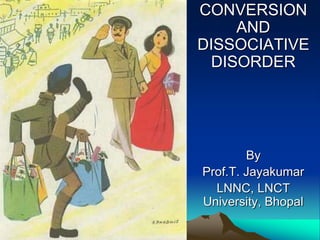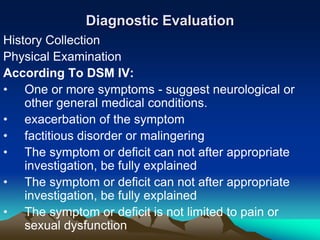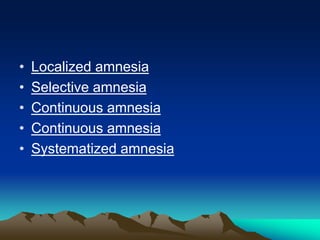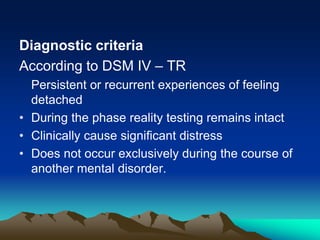This document discusses conversion disorder and dissociative disorders. It defines conversion disorder and provides epidemiological data. It also outlines the types of conversion disorder and their clinical features. For dissociative disorders, it describes dissociative amnesia, fugue, identity disorder, trance disorder, and depersonalization disorder. It discusses the psychopathology, diagnostic criteria, and nursing care for each disorder. Nursing diagnoses discussed include disturbed sensory perception, self-care deficit, inability to cope with anxiety, fear of unknown circumstances from fugue states, disturbed perceptions from repressed anxiety, and risk for suicide.





























